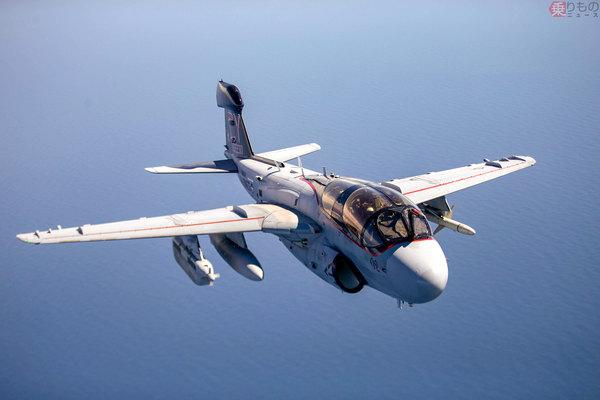EA-18G "Growler" Successful "Electr...
04
04
EA-18G "Growler" Successful "Electronic Warfare" Will Be a Manned/Unmanned Hybrid?
The autonomous unmanned flight test of the electronic warfare aircraft EA-18G "Growler", which was reportedly being considered by Japan, has been successful. We will look at what electronic warfare is in the first place, why it is unmanned, why Japan needs it, and the challenges in introducing it.
The experiment was a success Will the EA-18G "Growler" become a drone?
On February 4, 2020, Boeing announced that the EA-18G "Growler" developed by the company will fly based on a predetermined program without being controlled by a pilot. It was revealed that the flight experiment was successful.

The EA-18G is an electronic warfare aircraft developed based on the F/A-18F, a two-seat version of the F/A-18E/F "Super Hornet", the main fighter of the US Navy's carrier air wing. In the demonstration test conducted this time, one EA-18G with a crew on board controlled two EA-18G autonomously flying, and although the details are not disclosed, 21 missions were successfully tested. Boeing has announced that
Since radar that uses radio waves to detect approaching enemies and surface-to-air missiles that can attack from a distance where enemy aircraft cannot counterattack have been put into practical use, aircraft can attack the ground more freely than before. It got harder. The EA-18G receives enemy radar waves and radio communications and transmits stronger radio waves on the same frequency as those, jamming the enemy's radar and air traffic control facilities and aircraft communications. An aircraft whose main task is to make attacks more difficult and increase the survivability of allied aircraft.
In the "electronic warfare" category, "SEAD aircraft" that physically suppress (destroy) enemy air defense networks such as radar sites and wireless communication facilities with "anti-radar missiles" are also classified. The EA-18G can perform not only jamming by radio waves, but also as a SEAD aircraft with anti-radar missiles.
[Next page] Reasonable reason for wanting to turn electronic warfare into a drone

![[Kill personally developed games] Top class in app history! Too beautiful water puzzle "a [Q] ua" | Famitsu App for smartphone game information [Kill personally developed games] Top class in app history! Too beautiful water puzzle "a [Q] ua" | Famitsu App for smartphone game information](https://website-google-hk.oss-cn-hongkong.aliyuncs.com/drawing/article_results_7/2022/3/3/66755df992ff2d2b1e1ab43844ef9f88_0.jpeg)





![[Latest in 2021] 10 recommended seat covers for cars!If you want to improve the texture and functionality of the car, choose the mounting type and material. [Latest in 2021] 10 recommended seat covers for cars!If you want to improve the texture and functionality of the car, choose the mounting type and material.](https://website-google-hk.oss-cn-hongkong.aliyuncs.com/drawing/article_results_7/2022/3/3/e5b44589e77141f3a633189165fb6f60_0.jpeg)